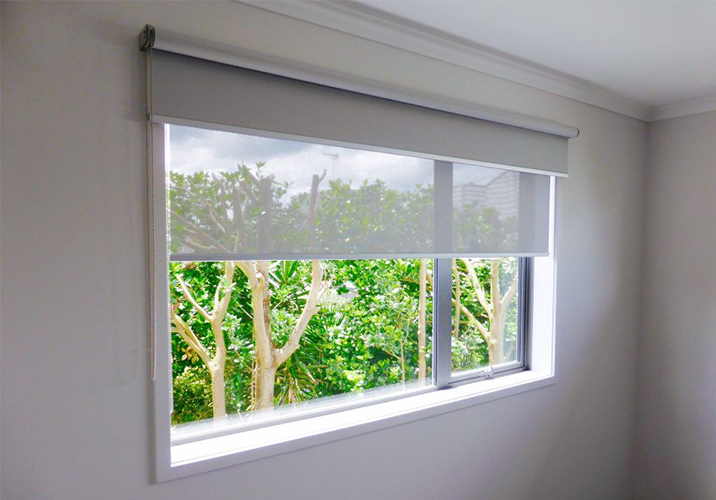Outdoor lights serve a practical purpose, illuminating dark spaces, lighting a pathway and securing your home during the night. Along with its functional benefits, outdoor lighting decor can replace a gloomy and uninviting space with an ambient glow in your backyard. Create an idyllic zone in the comfort of your own garden with our stunning ideas to decorate an outdoor space with lights.
The benefits of outdoor lighting
You can use outdoor lighting for functional tasks, or you can use it as a decorative accent. Task lighting should be placed in areas where there is high traffic and activity, such as above the barbecue grill or on pathways. Likewise, accent lighting can be placed anywhere to showcase the porch or an attractive item in the garden, such as a special tree or a beautiful statue. Accent lighting can also divert the viewer’s attention from items you may not want to put on display, such as a weather-worn doghouse or a sagging clothesline in the backyard.

Choosing outdoor lighting
Before you start shopping for outdoor lighting, decide what you want the lights for. Will they be decorative and subtle, or should they be bright enough for high activity areas outside? Do you just want to showcase water features and garden attractions, or will you be lighting up pathways so that you and your visitors can see at night?
Garden uplights
LED uplights are mounted at ground level to focus light upwards and illuminate surrounding plants, showcase the architectural features of your home and create a modern edge to your garden and landscaping. Uplights can update a dull garden wall or add character to a mundane space and are inconspicuous during the day.
Uplights are designed to withstand fluctuating weather conditions and temperature changes and installing a durable copper ground light will further extend the life of your ground light. When adding an uplight, angling the light creates harsh shadows but positioning the light close to the base of a plant, will let the light beam travel upwards.
String lights
For a cafe-inspired vintage look, hang rows of string lights overhead or across a gazebo. String lights can cover a wide range of space and function as a versatile decorating option for a unique outdoor space.
Take precaution and avoid any loose power leads or exposed hooks as you install your outdoor string lights. Secure outdoor leads and chords with electrical tape or clips rather than utilising screws or hooks which are prone to corrosion. String lights are available in a range of colours and styles, but low wattage incandescent lights are popular for its tinge of yellow. Before purchasing a string light, confirm it is fitted with LED bulbs for a longer-lasting alternative in your outdoor space.
Nylon lanterns
Nylon lanterns are finished with a soft lustre and a bright finish and are an eye-catching addition to your garden. Unlike than the traditional paper lantern, nylon lanterns are also wind and water-resistant making it more acclimatised to the outdoors.
Solar lanterns are an energy-efficient alternative, with most solar lanterns equipped with dual LED bulbs, rechargeable batteries and built-in sensors that allow the lanterns to switch on automatically and glow for up to eight hours.
Contact local electricians
Deck lights
Power choices in deck lights
You will need a power source for your deck lights. There are three main types you can choose from. You can opt for hard-wired lights that you can control from dimmers or switches, lights that simply plug into your regular electrical outlets or solar-powered lights. With these options, even a beginner can change the atmosphere of their deck using deck lights.
Pod lights
These lights are very versatile and can be mounted virtually anywhere on your deck. Pod lights offer bright lighting and low profiles that can be used to create dramatic lighting effects. You can also place pod lights in areas with plants to diffuse the light, creating a softer effect. For this type of lighting hard-wiring is usually required since they are halogen or LED-based.
Deck post lights
Deck post lights are the easiest to install and can often be found in solar-powered models. They are designed to simply fit over the top of a deck post and usually only require a set-screw to hold them in place. While solar-powered deck post lights are the easiest to instal and require no outside power source, they may not offer a great amount of reliable light.
Inset lighting
Although inset lighting is the most difficult to install, it can also be the most beautiful type of deck lighting. As the name suggests, inset lighting must have holes drilled in the decking for the lights to be set into, and these lights usually require hard-wiring. If you are not well-versed in electrical work, this may be best left to the professionals.
Inset lighting can be used on deck steps to light them up for safety precautions and used to create a lit walkway up to the main deck area. You can opt for accent lighting with the lights placed strategically around the deck or you can create a more dramatic flair with lights running around the perimeter of your deck.

Lighting options for your pergola
You may be surprised by just how many options there are for lighting your pergola. Take your time exploring them to find the lighting that best suits you and your home. Some of the common lighting methods are:
- Outdoor fireplaces
- Solar lights
- Fire pits
- Sensor lights
- Torches
- String lights
- Chimineas
- Candles
- Solar lights
- Spot/floodlights
- Lanterns
Budgeting and lighting
While the costs of the lights themselves are always a consideration when planning your budget, don’t forget the cost of running the lights. Electrical lights are becoming increasingly expensive as the cost of electricity rises, even more so if they are not energy efficient. You might also consider the cost of replacing lights that become damaged by weather or by accident.











